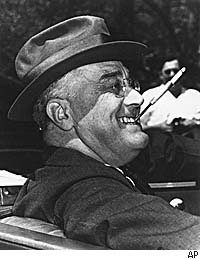In the midst of the current economic jitters, I have heard more than one commentator assert that when economic times are rough, voters tend to gravitate toward the Democrats.
Why on earth would that be?
I want to provide a little history lesson on how Democrats have handled the economy over the past 70-plus years. Let’s start with Franklin D. Roosevelt.
The Great Depression hit America in 1929. Voters turned out the Republicans and looked to FDR to reverse the economic downturn. He initiated his program, which was called “The New Deal.” He became the most activist president in history up to that point, and more legislation passed Congress in a short period of time than ever before. A slew of new agencies (dubbed “Alphabet Agencies”) erupted on the national scene, all created for one ostensible purpose: bring the country out of the Great Depression.
Eight years later, no visible improvement had occurred. In fact, in 1937, when things had started to rise slightly, we suffered another recession in the middle of the Depression. I think most honest historians today have to admit that FDR’s New Deal was actually more of a stimulus for extending the depression than solving it. What got us out of it? Only all the production that was needed for WWII.
Now, people who lived through the 1930s “feel” like FDR brought us out of the Depression. He was a good communicator (his Fireside Chats on the radio) and all the activity made everyone feel like the government was busily reversing the bad situation. But, in fact, it was doing nothing of the kind.
Feelings can lead us astray. I submit that if the commentators are correct, feelings once again are poised to undermine genuine recovery.
Lesson #2 coming up soon.

